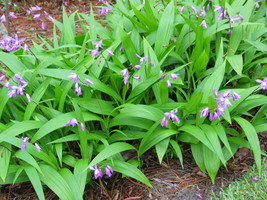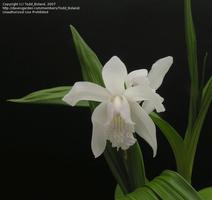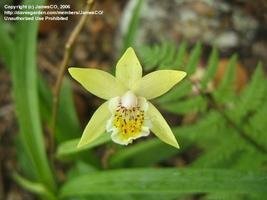





(Editor's Note: This article was originally published on April 23, 2009. Your comments are welcome, but please be aware that authors of previously published articles may not be able to respond to your questions.)
Bletilla striata hails from China and Japan and is hardy in gardens from USDA Zones 5 (with protection) to 9. Unlike many orchids, it is an easy-to-care-for hardy terrestrial orchid that grows well in gardens in most temperate regions of the world. Known variously as hyacinth orchid, hardy orchid, urn orchid, and Chinese ground orchid, it is a choice plant regardless of which common name one chooses.
The Flowers
Bletilla produces small Cattleya-like blossoms that are best viewed close up. Their pinkish-lavender color and diminutive size combine to make them easily missed unless they are near a walkway or other prominent place in the landscape. The orchid blossoms are borne in racemes (spiked clusters) with three to seven flowers held on the upper part of otherwise naked scapes.
The flowers stand anywhere from 8 to 18 inches tall and are held above the foliage. Each flower has five spreading petals with an undulating, furrowed lower lip which may or may not be slightly different in color from the rest of the flower. The flowers open from the bottom of the cluster and progress to the top, with three or four flowers open at any one time. They fall off cleanly, and the bloom period lasts for about a month. 
The Foliage
Even out of bloom, the clumps of longitudinally pleated, upright, linear leaves add textural interest to the landscape from early spring until the frost cuts them down. Each pseudobulb sends up one or two stems about the size of a pencil, and each stem has four to six leaves. The basal portion of the leaves encircle the stem, and the sharp-pointed leaves are held stiffly upright. A naked scape emerges from the center of the leaves, upon which the flowers are produced. Green seedheads follow the blooms, but gradually turn brown as they mature.
Culture
Hardy orchids prefer a place in partial shade. Some morning sun is beneficial, but the hot afternoon sun will burn the foliage. Plant the corm-like pseudobulbs (or tuberous rhizomes) about four inches apart and two to three inches deep in rich, organic, well-drained but consistently moist soil. Mulch with pine needles or other organic material to discourage weed growth and to conserve moisture. Fertilize in early spring with a balanced, slow-release fertilizer. The plants are tolerant of both acidic and alkaline soils and will spread modestly after a period of time by the movement of short, creeping rhizomes and by seed dispersal.
In the Deep South, a mulch of pine needles will help keep them cool during the early spring and possibly offset their tendency to start growing on the first few warm days of spring, only to be nipped back by a late freeze. However, the period of vernalization is necessary for them to bloom, which explains why they are not satisfactory in the tropics.
Propagation is by division, which should be done every four to five years for best flowering. Hardy orchids increase steadily as the fleshy pseudobulbs divide each year. Groom as necessary in late fall and early spring. Freezes of late winter or early spring sometimes nip the foliage, and the brown tops will be unsightly throughout the summer unless they are cut back. Remove the seedheads as they appear, and save them for your pals who enjoy using them in floral designs, or try your hand at germinating the tiny seeds.
Although pests are not usually problematic, snails and slugs may need to be controlled in early spring while leaves are tender and succulent.
Kinds
My ground orchids are rosy purple and have no cultivar name, but other kinds can be ordered from mail-order websites and catalogues. ‘First Kiss' has white flowers blushed with a bit of purple on the lip. ‘Albostriata' has rich purple flowers, but the leaves are edged with white. ‘Alba' is a white-flowered cultivar. A different species, Bletilla ochracea has yellow flowers. 
 Bletilla striata 'Alba' Bletilla ochracea
Bletilla striata 'Alba' Bletilla ochracea
Uses
In addition to their use in pots, containers and in garden beds, several medicinal uses have been made of this plant. The Vietnamese have used the corm, or underground pseudobulb, to treat pulmonary diseases and tuberculosis as well as to relieve the pain resulting from burns. A compound within it promotes the clotting of blood. Most gardeners do not grow it for its medicinal properties, but we find the transient flowers quite indispensible in the early spring garden. Dave's gardeners agree that the flowers, together with the pleated foliage that stays after the flowers have passed, combine to make Bletilla a pleasing permanent addition to their gardens.Thanks to Todd Boland for his image of Bletilla striata 'Alba', and to JamesCO for his image of Bletilla ochracea.
Copyright © www.100flowers.win Botanic Garden All Rights Reserved